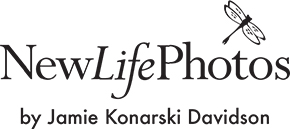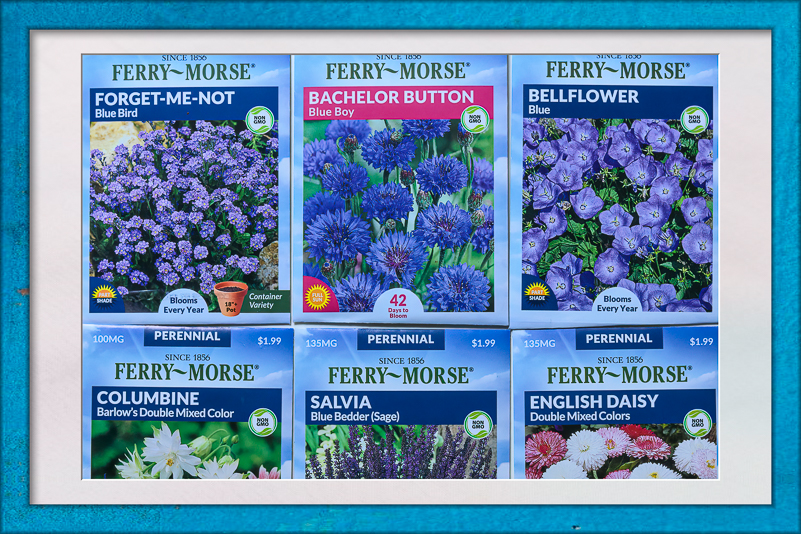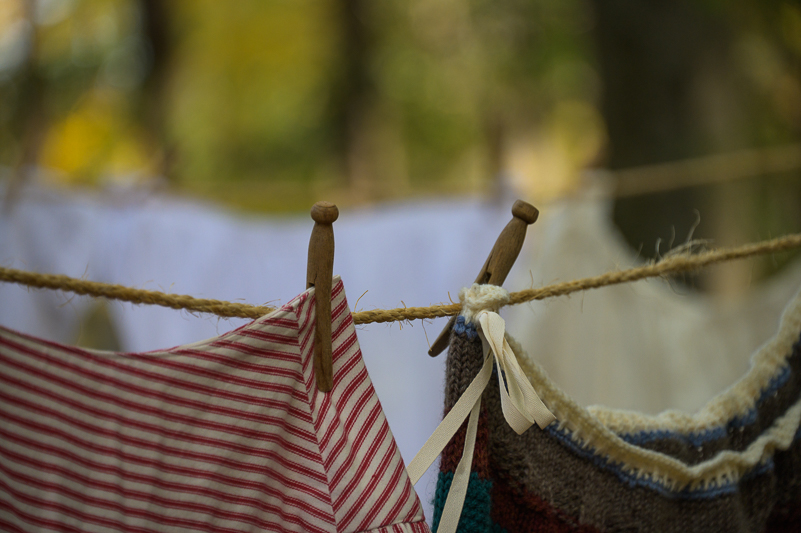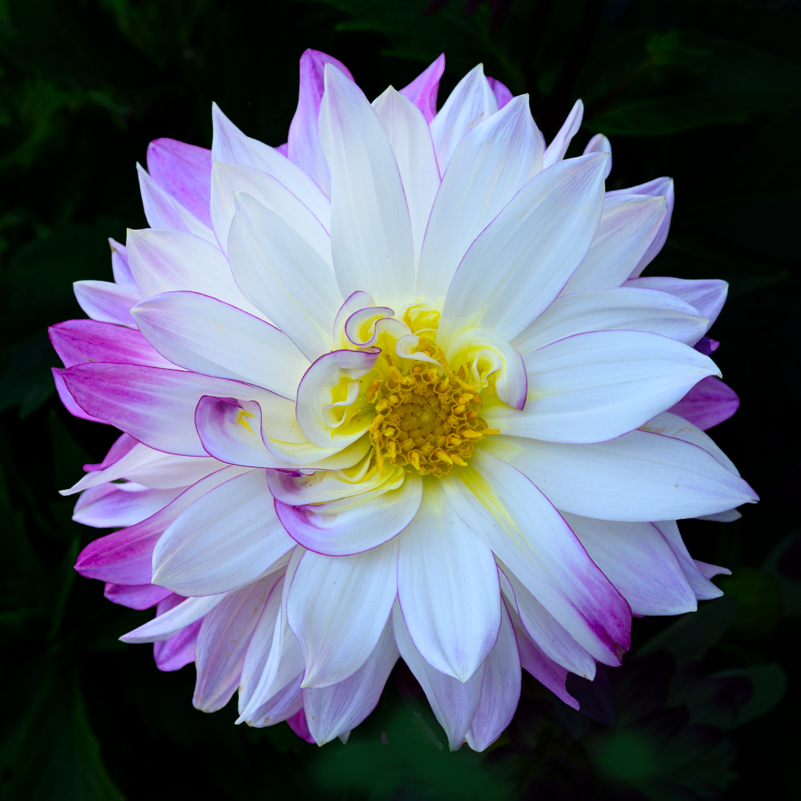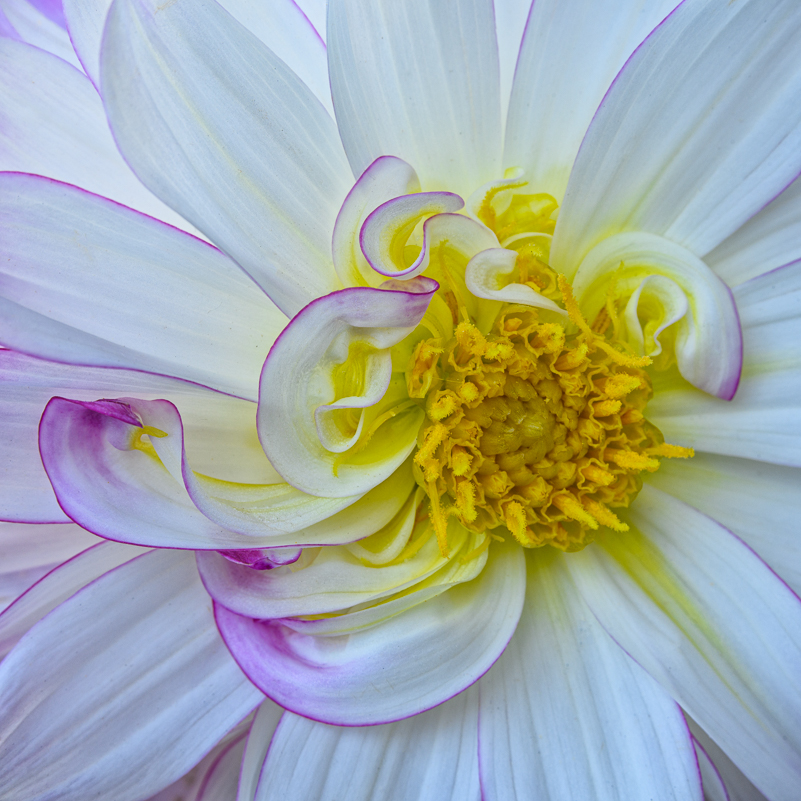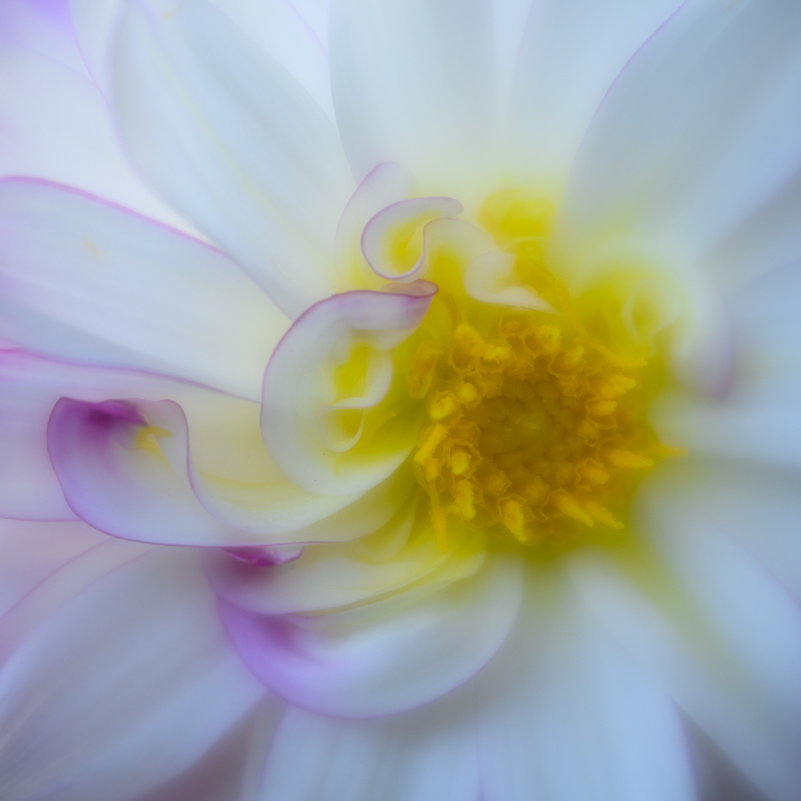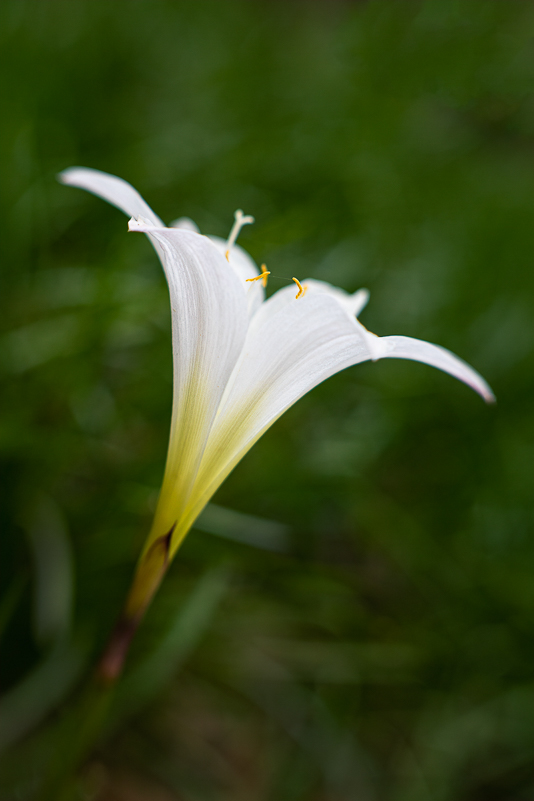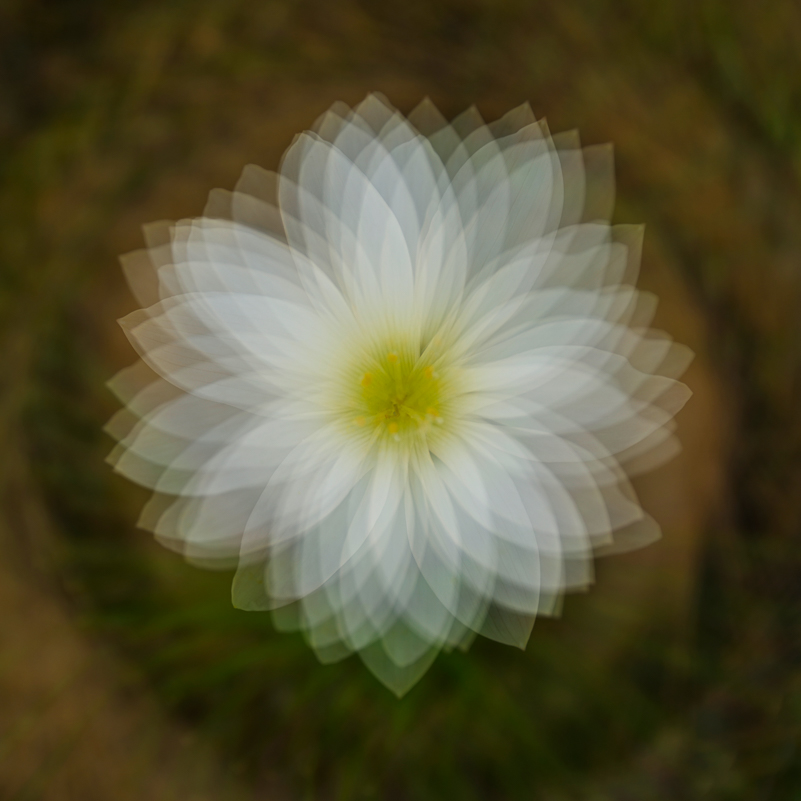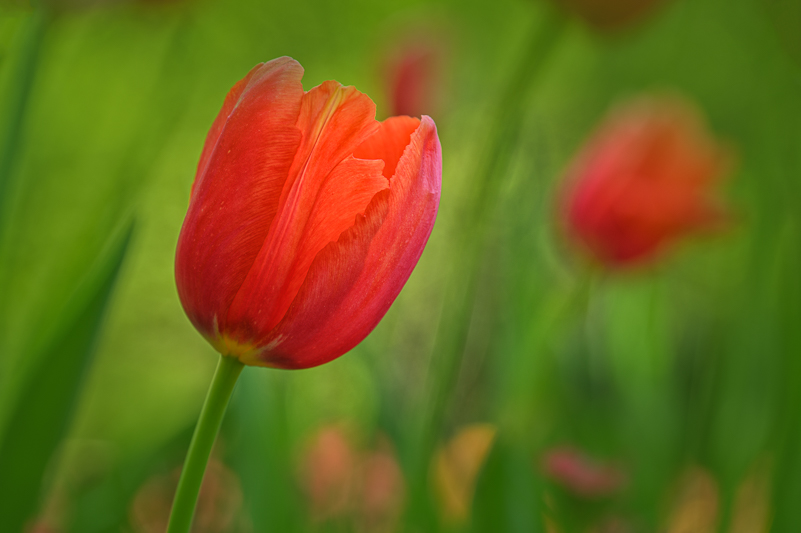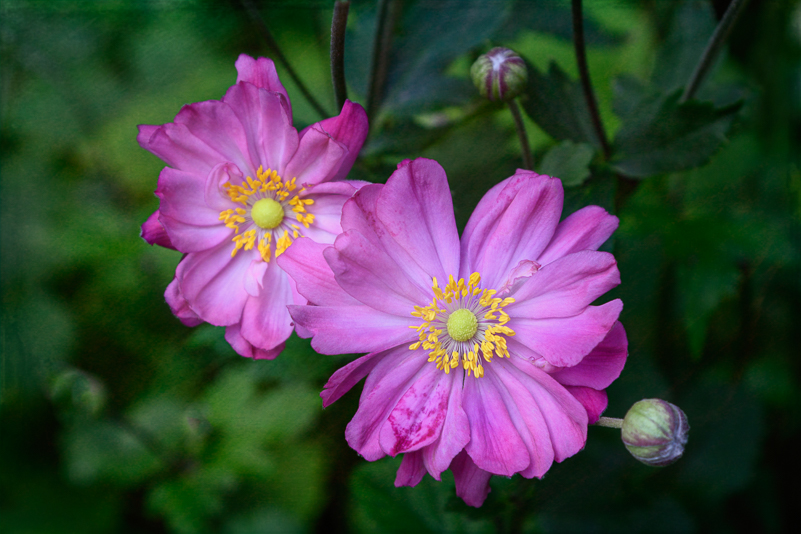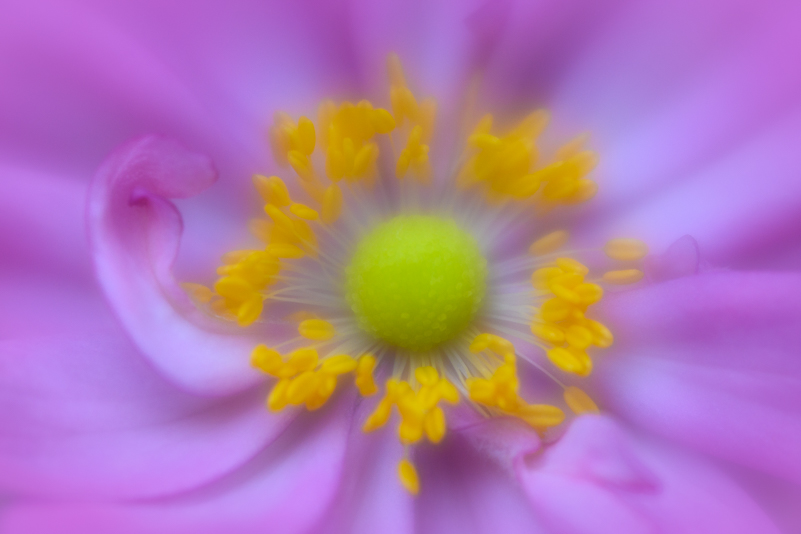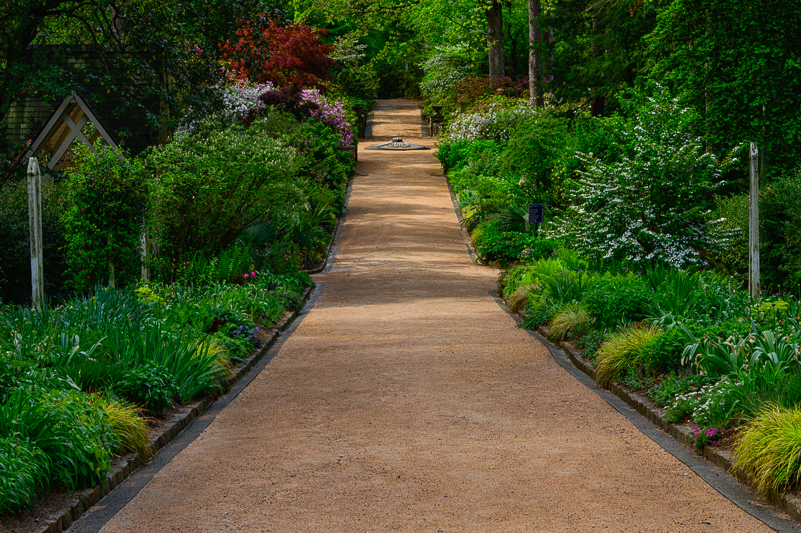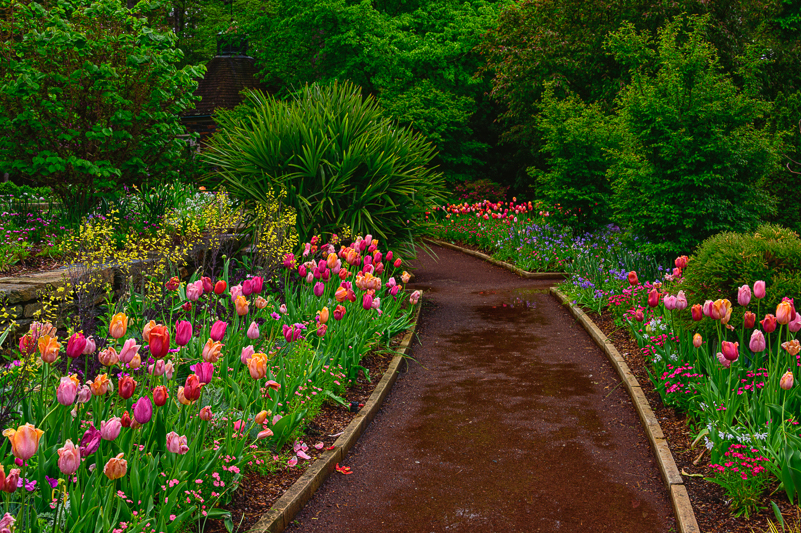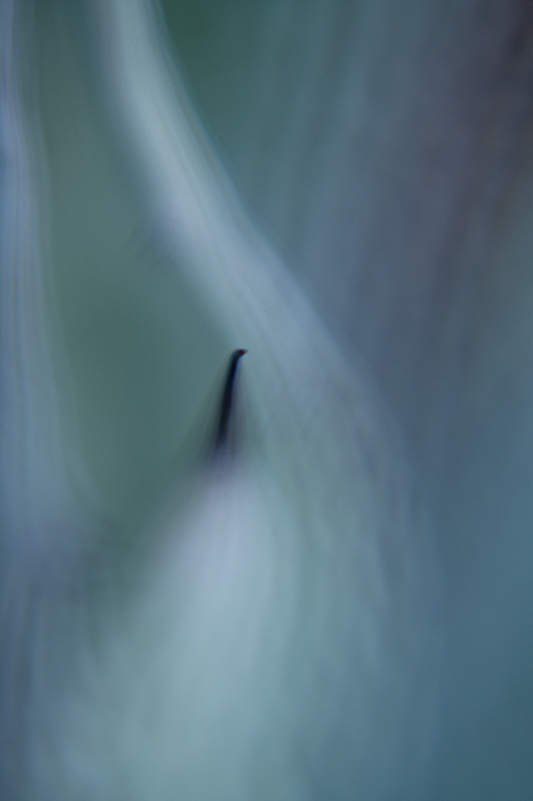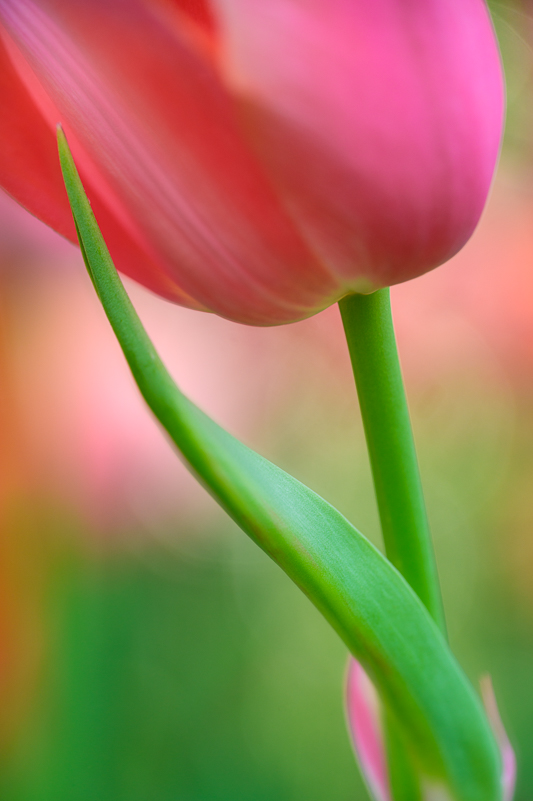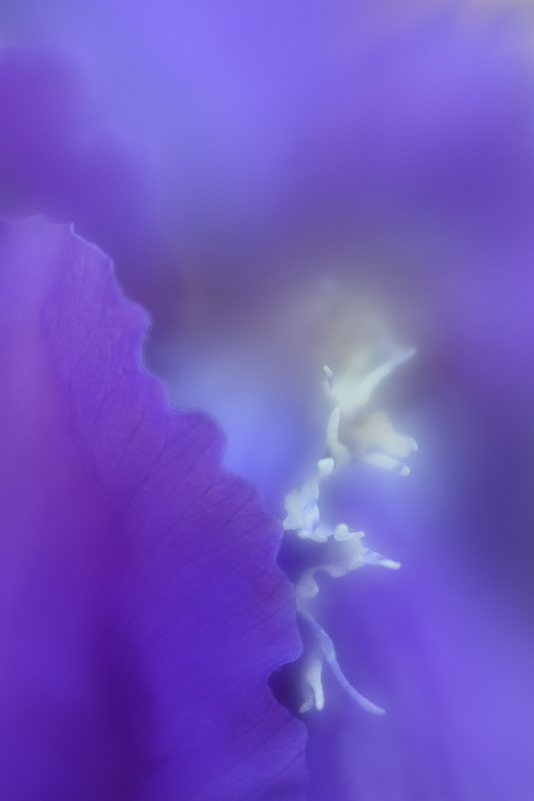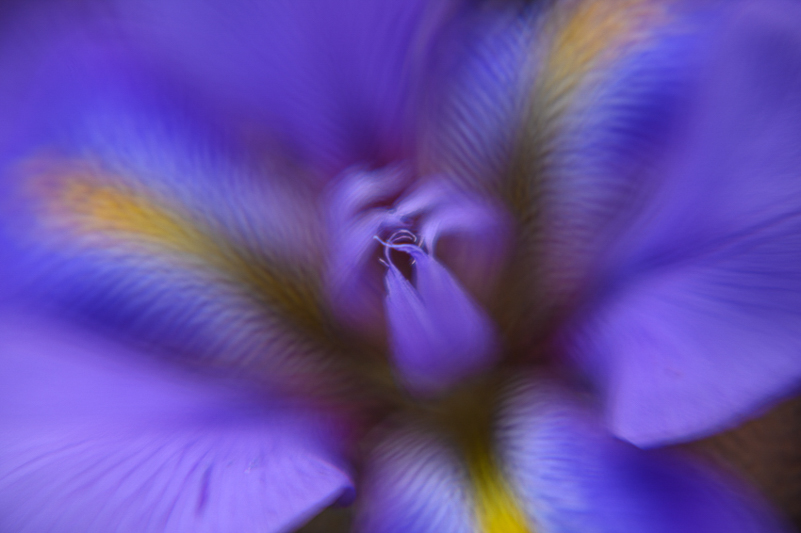If you always do what is easy and choose the path of least resistance, you never step outside your comfort zone. Great things don’t come from comfort zones.
– Roy Bennett
Ever look at images that other photographers create and wonder? Me, too. Sometimes I wonder how an image was made, where in the world it was taken. Sometimes I wonder what technique or what tools were used. Sometimes I wonder how photographers come up with their unique perspectives of common subjects (often flowers, but not always). I wonder, sometimes, but far less often, if the work I’m doing is “good enough.” Do I “need” to be more technical in the execution of my ideas in order to move further into my vision? I wonder about a wide range of things. I’m betting that you do, too.
I recently returned home from co-leading the CNPA Creative Flower & Garden Photography event with Mary Presson Roberts. At the end of each full day of shooting in Sarah P. Duke Gardens with my groups, we met for a wrap-up roundtable. I asked them to share three things from their day: something new, some challenges and some successes. The answers were both common and unique, and out of this dialogue comes this blog because of the response of one photographer, Michael. He shared that his challenges and his goal in photographing flowers was to make images that go “beyond the seed packet.” He wants the flower images to look and feel more artistic. As a landscape photographer, one of his “battles” was between f/2.8 and f/16. The f/16 image would likely not grace the wall of a retreat center but could easily make it to a seed packet.
On the flip side, for me, I have a much harder time photographing flowers for the seed packets or shooting the “big picture” of the entire plant with flowers. My tendency is to dive into the petals, edges, flow, softness and the intimately subtle details. Liken this to me being asked to photograph a portrait; I’m more likely to be drawn to light dancing around a ringlet of curling hair than finding the best side and light for the person whose portrait I’m supposed to photograph. Invite me to photograph an antique car, and you’re lucky if there are more than a few “whole car” images. It is more likely that what you would see are hood ornaments, headlights, door handles and emblems. That’s what I’m drawn to – parts and pieces, in close and leaning heavily toward the “woo woo” interpretive style.
A FEW WORDS ABOUT THE LEFT-BRAINED AND RIGHT-BRAINED
I always learn something when exploring ideas for my blogs, and this is no exception. What I learned was that the theory of left-brain and right-brain dominance began in the 1960s with Roger W. Sperry, psychobiologist and Nobel Prize Winner. In short, the left-brained thinker is perceived to be logical, analytical and orderly; while the right-brained thinker is creative, intuitive and artistic. (Who wouldn’t want to stake a claim on being right brained when it comes to photography and art?) Apparently, more recent research (2013) says that there is “no proof” of this theory and that we use both sides of our brain. It states that our brain works collaboratively and that different tasks and thinking determine which hemisphere of our brain is being tapped into more. The left brain is responsible for speech and abstract thinking and controls the right side of the body. The right brain is responsible for image processing and spatial thinking and controls the left side of the body.
The romantic in me wants to “own” the right brain attributes that include feelings, visualization, imagination, intuition and being more creative. The realist in me knows that there is an analytical and orderly side to me that includes logic and thinking in words. I believe that I have a general leaning and am very comfortable in the creative and proverbial “right brain” zone, but the left brain in me is the part that has kept me determined and somewhat of a bulldog in balancing my checkbook to the penny for over 40 years. I like order, but I am often equally comfortable with a “creative mess.”
To be honest, it seems to me that the balance is not left or right but more of seeing and photographing subjects with more literal (documentary) or figurative (interpretive) focus. Both paths are creative, and all photography combines the technical and artistic in different ways. It’s up to the photographer to determine how they want to portray their subjects. There are so many ways to approach any subject, and I believe that it is more about the photographer’s goal or intention that steers the approach. Photography is a blend of art and science. In our images, the scales are not always even. We need to give ourselves some grace when our images lean more in one direction or the other, and challenge ourselves when we’re wanting the balance to shift.
THE ROUNDTABLE WRAP-UP
As mentioned earlier, the idea of leading the group in a roundtable was new for me. However, I knew our time needed to be interactive, especially after a long, hot day in the gardens. As beautiful as the gardens were, and as fun as it was to be there with a camera for most of the day, I knew that my turning off the lights and sharing a program with them was likely to lull more than a few to sleep.
As we went around the room, sharing the “new, challenges and successes”, it was interesting to hear the common threads in the answers to the questions. The NEW included things like learning multiple exposures and motion blurs (ICM), focus stacking, using a new lens or camera, learning how to use a Lensbaby, how to control light with a diffuser and more.
The CHALLENGES included some obvious ones like dealing with wind and controlling light, using or not using a tripod or circular polarizer, isolating subjects and getting clean backgrounds. Not surprising, the bird photographers had a harder time focusing on the flowers when a flying bee or bird or moth entered their line of sight. The landscape photographers had a harder time finding smaller stories. And, many had a hard time staying “long enough” with their subjects to discover their secrets. I understand. It’s much harder for me to work the bigger picture when flowers are involved. In fact, while scouting for the event, I challenged myself to shoot more landscapes than macro or close-up. It was not easy. It helped that I gave myself a good chunk of time (a few hours) to plant myself in front of several amazing beds of tulips and irises and find the magic.
It was great to learn of the SUCCESSES, many of which were connected in some ways to the “new” and “challenges”. They included successes with the new lenses, better understanding of settings controls on their cameras, successful isolation efforts, and diffuser use. They learned to shoot multiple exposures and intentional camera motion, achieved success with selective focus and staying longer. Even more meaningful, their successes included coming out of the field with images they were happy with. It was in one of these roundtable wrap-ups that Michael shared the “seed packet” analogy, which I absolutely love.
FORCE YOURSELF OUT OF YOUR COMFORT ZONE
It Is absolutely true that learning new things can be difficult and uncomfortable. It is in the stepping out to learn that we grow and expand our vision, knowledge and options. A great quote on this comes from Matt LeMond:
In the absence of a challenge, there is comfort.
In the presence of comfort, there is no change.
I would add that there is also no growth. I think we can all relate to the discomfort of not knowing how to do something and the awkwardness of the learning process that usually involves fits of starts and stops and multiple failures before ultimate success. Learning takes time, patience and persistence. We grow on that edge of our comfort zones if we push ourselves in that direction. And, guess what? There is always something to learn … so buckle up or have a seat and stay where you are. Me? I’m buckling up for the rest of my life and am willing to deal with the skinned knees and bruised ego so that I can celebrate the successes as they come along. In fact, I came up with an exercise for anyone struggling to go beyond their own “seed packet.”
THE 15-MINUTE EXERCISE
We already know about the potential for complacency in our comfort zone and how it will move us nowhere. As Michael coined the phrase I love (thank you), I remembered one that Nancy Rotenberg would often share: “Go beyond the handshake.” This encouragement applies to much more than photography. The more we know about someone or something that we are photographing, the more connected we become. Our images reflect that connection. One of my phrases is, “Stay longer, see more.” Both of these are about spending more time with who or what is in front of us.
The ”15-Minute Exercise” is about staying uncomfortable in order to learn and grow beyond that proverbial seed packet. For some, as I’ve mentioned, slowing down is downright agonizing, and patience is a joke. Michael’s goal was to be more able to find artistic ways to photograph the flowers. He photographs landscapes most often. The “f/16 photographer” balks at the shallower depth of field that flowers invite for interpretive and artistic looks. The bird and wildlife photographer is on the lookout for action in the gardens. They are very often sidetracked and distracted by any sign of critter action (which is funny to watch). I came up with this idea for them to practice that would keep them focused for a tolerable window of time in their “discomfort zone.” It has no connection to being or thinking in a right- or left-brained manner, and everything with making an uncomfortable commitment.
For the exercise, START HERE:
Pick your challenge and find a subject that you like, one that interests you. (If you try it with something you don’t like, you won’t complete the exercise.) Before you start the clock, observe your subject, identify what you like about it, and determine your approach (lens, exposure, depth of field, etc.) When ready, start the timer and commit to stay uncomfortable for the entire fifteen minutes. You must commit to working out of your comfort zone for fifteen minutes. When the alarm rings, you can fall back into your comfort zone.
If you’re trying to photograph flowers, for example, in more artistic ways, and your natural bent is more literal and documentary, you are not allowed to use an aperture wider than f/5.6. If you lean heavily in the “woo woo” zone, you are not allowed to use an aperture wider than f/8. You must commit. Similarly, if you are a bird and wildlife photographer and you want to expand or improve your landscape photographer, you are not to photograph a single bird or animal for fifteen minutes, no matter how hard it is. I have seen the challenge and the element of distraction that overrides focus on the flowers when a critter buzzes in. Resist the urge . . . for fifteen minutes. You can do it!
Much like my commitment to focus on the bigger pictures when every ounce of me wanted to immerse myself in the petals, this exercise is possible and helpful for anyone. In my mind, the more you do it and the longer you do it, the less uncomfortable you’ll be in and at the end of that 15-minute window. When you are comfortable, give yourself another challenge and do another exercise that makes you cringe. Each one is an opportunity to grow. As you do this, the birds in flight that you cannot nail will be less intimidating. The flowers will be singing to you and calling for your attention. The landscapes will beckon to the macro photographer, and the journey will be even more rich.
I have a slew of things on my “need or want to learn” list. A few of these will put me strongly in a most uncomfortable zone. On the other side, there will be success. I say, “bring them on and let’s go!” What about you?
What will be your first “15-minute exercise”?
What is the “seed packet” you want to go beyond?
